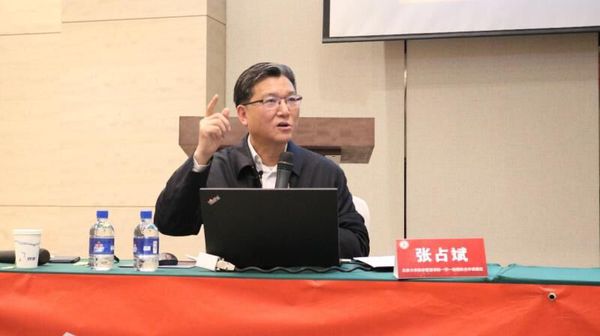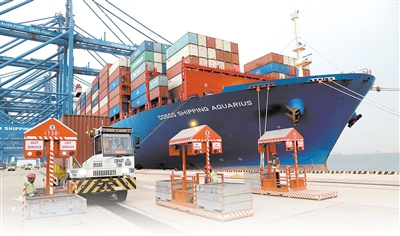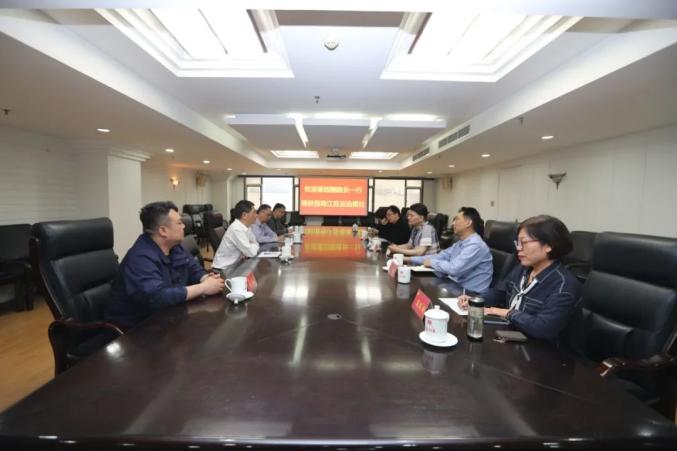Decode The Urban Sample Of Cultural Confidence|Pearl Sail Movies New Trends—Decode The Cultural Confidence Sample Of Beihai’s “Ancient Maritime Silk Road”
Decode The Urban Sample Of Cultural Confidence|Pearl Sail Movies New Trends—Decode The Cultural Confidence Sample Of Beihai’s “Ancient Maritime Silk Road”
Thousands of sails carry the bright moon, leaving the stars to fill Nanpu. More than two thousand years ago, Hepu Port was filled with sails and department stores. Ocean Ships loaded with Central Plains silk met Roman glass and Persian agate that crossed the ocean, and the grand scene of the ancient Maritime Silk Road was staged here. More than two thousand years later
Thousands of sails carry the bright moon, leaving the stars to fill Nanpu.
More than two thousand years ago, Hepu Port was filled with sails and department stores. Ocean Ships loaded with Central Plains silk met Roman glass and Persian agate that crossed the ocean, and the grand scene of the ancient Maritime Silk Road was staged here. More than two thousand years later, the "21st Century Maritime Silk Road" reactivates this ancient waterway and opens up the new life of a modern port city.
The genes of openness are deeply rooted in the blood and memory of this city. In Beihai, Guangxi, the endless ship songs tell the vicissitudes of history and echo the waves of the times.
Thousands of years of vicissitudes
The setting sun sets west, and the sails dot. Standing on the viewing platform of the Maritime Silk Road Shougang Scenic Area, the wave marks dragged out by modern freighters overlap with the routes of ancient merchant ships in the twilight, and the prosperity of the ancient port has reappeared today.
According to the "Han Shu Geography", Hepu, Beihai, was the place where official merchant ships set off, which was one of the starting ports of the Maritime Silk Road of the Han Dynasty. It was once a prosperous ancient county where "the boats followed the road and the merchant envoys joined the country." In the Hepu Han Dynasty Cultural Museum, precious cultural relics such as Persian pots and Roman glass bowls tell the history of the integration of Chinese and Western cultures.
In April 2017, during his inspection in Beihai, General Secretary Xi Jinping came to the Hepu Han Dynasty Cultural Museum to learn about the history of foreign trade and exchanges in the Beibu Gulf region in the Han Dynasty and pointed out: "The road to the sea is an important way for a country to develop. The cultural relics displayed around the ancient Maritime Silk Road are all history and culture."
The tide is ebbing and flowing, and the blood of openness is always flowing.
In 1876, Beihai was designated as a foreign trade port. The prosperity brought by the Nanyang merchant ships and the urban fireworks in Lingnan are precipitated into red windows and white walls that combine Chinese and Western styles in the salty and wet sea breeze, and are imprinted in the ancient streets and alleys of the North Sea.
Beihai Old Street, a Linhai Street built in 1821, is distributed with buildings such as the former sites of consulates in Britain, France, Germany and other countries. Under the arcade, the 87-year-old old neighbor Pang Baoshu shook his palm-leaf fan and told the past tourists about the past and present: "The old street was once the place where Chinese and foreign merchants stopped their ships and went ashore. In the middle and late Qing Dynasty, our ancestors dug two deep wells here to provide sweet well water for merchants and fishermen who were coming and going... The old street and the double water well are important witnesses of the Beihai port culture!"
The confidence of Beihai people is rooted in the nourishment of the millennium cultural context. Whether it is the Maritime Silk Road culture, the port culture, or the Nanzhu culture and the Dan family culture, which are famous for the allusion of "Zhu to Hepu", they are all the endless glorious years of Beihai.
Li Xinqiang, a local root carving artist born in the 1970s, insists on using local materials, and transforms excellent regional culture into intangible cultural heritage works between his flying fingers, which are sold well at home and abroad. Beihai root carving, shell carving, horn carving... The ancient skills engrave contemporary patterns of civilization inheritance in the symphony of the times.
Located on the banks of Lianzhou Bay of Hepu, the Maritime Silk Road Scenic Area replicates the Han code head trade scene, recreating the grand scene of the ancient Maritime Silk Road starting from the port and sailing. Walking in the scattered castle complex in the scenic area, watching actors wearing ancient costumes play the role of merchants, fishermen and sailors from all over the world walk past, as if they are traveling through time and space.
"Restore history and let the thousand-year-old ancient port 'open up' can better awaken cultural genes and inspire people's love for a historical and cultural city." Xu Chengrong, brand planning director of Guangxi Shougang Investment Group, said that since the trial operation in 2021, the scenic spot has received more than 4 million tourists.
Come from history and rejuvenate in reality. Today, the Beihai is closely connected with the world with an open attitude. The large-scale historical dance drama "Blue Sea Silk Road" was selected as a communication and promotion project of the National Art Fund and toured at home and abroad; the "Belt and Road, Beihai Meets Beihai" series of tourism and cultural publicity and exchange activities have been visited more than 20 countries and regions including Russia, Japan, Greece...
The long river of time rushes forward, the roots of civilization spread deep, and the history and culture of the North Sea continue to be revitalized and vibrant.
The sea embraces all rivers
The morning light is slightly dewed, and the sea surface is sparkling. On the silver-white beach, people who were walking early left a string of footprints.
Located on the banks of the Beibu Gulf, affected by the subtropical monsoon climate, the Beihai is warm and humid all year round, and has the reputation of "natural oxygen bar", which has attracted many northerners to come here to live.
60-year-old Zhao Qingyu is from Jilin. More than 10 years ago, when she first set foot on Beihai, she was attracted by the unique marine resources and climate here, so she simply bought a house by the sea and settled down after retirement: "Many old friends around me lived a comfortable old life in Beihai."
In early summer, small Western-style buildings next to Yintan Scenic Area are lined up, and travelers sit on stone benches to cool off and chat, with accents from all over the world.
As retirement care in other places is accepted by more people, Beihai City warmly welcomes visitors from all directions and set up a Traveler Federation to provide family-style services to more than 20,000 members from all over the country.
Although the blue sea and silver sand are beautiful, they are not as warm as the fireworks on earth. What really wins the hearts of wandering children in Beihai is to let every wandering soul meet the warmth of the second hometown here.
In the late 1970s, on a deserted beach located in the southwest of the North Sea, more than 7,000 returned overseas Chinese settled ashore and established the "Overseas Fishery Commune", which is today's Qiaogang Town, which is a town in my country that resettled returned overseas Chinese with established towns.
"I still clearly remember the excitement and joy of moving into the building!" Wu Yuming, a returned overseas Chinese, recalled. In 1978, at the age of 4, he returned to Beihai from abroad with his family on a fishing boat. Nearly half a century has passed. Wu Yuming, who has accompanied his mother to run a snack stall since childhood, has now become the president of the Qiaogang Town Food Association and runs many food stores in Qiaogang Town.
"Where you are at peace is your home; where you are at peace is your hometown." Wu Yuming sighed, "Beihai used its open mind to soothe the wandering hearts of overseas wanderers."
"When you come to Beihai, you will be a Beihai person!" In Beihai City's "14th Five-Year Plan", a new term appeared for the first time: "New Beihai person". This title condenses the city's tolerance and care for foreign people, and further reflects the city's open thinking.
In 2018, the Beihai Yintan Scenic Area was fully connected, from a sectioned shoreline blocked by inner harbors and docked by fishing boats in the past, it has become the endless "Ten Miles Yintan" now. This is the city business card handed over by Beihai to the world, and it is also a vivid footnote to the open development of the city.
In midsummer, the beach is bustling with people, and various musical nodes ignite youth enthusiasm and gather young people from all over the world. On the sea, the motorboat was rushing at lightning, drawing silver arcs.
On the shore of the blue ocean, roads are rapidly extending, modern buildings are rising, and batches of investors are coming... The open character nurtured by the millennium tides quietly integrates into the spiritual bloodline and urban texture of the North Sea.
Xiang Haitu Qiang
The gantry crane of Tieshan Port is looming in the morning fog, and the 10,000-ton giant ship sounds its whistle. On both sides of Xianghai Avenue, the photovoltaic panel matrix is undulating like blue wheat waves; the white wind tower of the offshore wind farm is waving its "arms", converting the salty and wet sea breeze into clean energy...
The ocean has always been the "blue engine" for the development of the North Sea.
In 1984, Beihai was listed as one of the first 14 coastal open cities in the country, and stood proudly at the forefront of opening up to the outside world.
On April 19, 2017, General Secretary Xi Jinping pointed out during his inspection at the Tieshan Port Public Wharf in Beihai City that Tieshan Port has location advantages and broad development prospects, and will be an important support for the Beibu Gulf Economic Zone in the future. We must build a good Beibu Gulf port and build a good maritime economy.
Keep the instructions in mind and be strong in the sea.
In 2019, in a wasteland in Tieshan Port, Guangxi Xinfuxing Silicon Technology Co., Ltd. built the photovoltaic glass industry from scratch. In just five years, relying on the Beihai's quartz sand resources and the advantages of sea transportation, it has become one of the top 100 manufacturing enterprises in Guangxi.
"Beihai is a vibrant city, helping more and more companies to open up their territory and break through the waves!" Chen Chunling, manager of the Human Resources Department of Xinfuxing Company, said passionately. At present, Xinfuxing Company’s three photovoltaic glass production lines are operating efficiently, with a daily production capacity of 3,600 tons.
In order to ensure that the introduced projects can be stable and developed well, Tieshan Port Industrial Park is doing a good job in the "first half" of investment promotion, but also taking the initiative to do a good job in the "second half" of investment to provide high-quality services to enterprises.
In 2021, Tianshun Wind Energy (Suzhou) Co., Ltd., a leading wind tower and blade equipment manufacturing company, settled in the East Port of Tieshan Port, Beihai, and then moved the supply chain center with an annual trade volume of 3 billion yuan to Beihai. "What I valued at when choosing Tieshan Port is the rich marine resources and good business environment here." said Li Hongtu, general manager of the company's operations.
It has ranked first in Guangxi for seven consecutive years. Beihai's business environment is well-known, and manufacturers at home and abroad gather in Beihai's industrial parks with various accents.
The "6 2" sea-oriented industrial cluster is gradually taking shape, green chemicals, electronic information, new silicon-based materials, high-end paper, stainless steel, and energy have become the dominant industries in Beihai, and the marine equipment manufacturing industry and ecological aluminum industry are accelerating the formation of new economic growth poles.
Connecting ASEAN countries with the Guangdong-Hong Kong-Macao Greater Bay Area, the North Sea’s role as a maritime economic fulcrum has become increasingly prominent.
If the Beihai ports in history exported silk and porcelain, today the Beihai is exporting modern wind power equipment and photovoltaic glass, becoming a "industrial pearl" in the rise of the motherland's southern Xinjiang.
Beihai is like a "wind-chasing boy" standing in the southern border of the motherland. He has pearls on his clothes and eyes looking at the sea. With port industry, marine fishery, and coastal cultural and tourism, he is moving forward all the way toward the sea economy.





